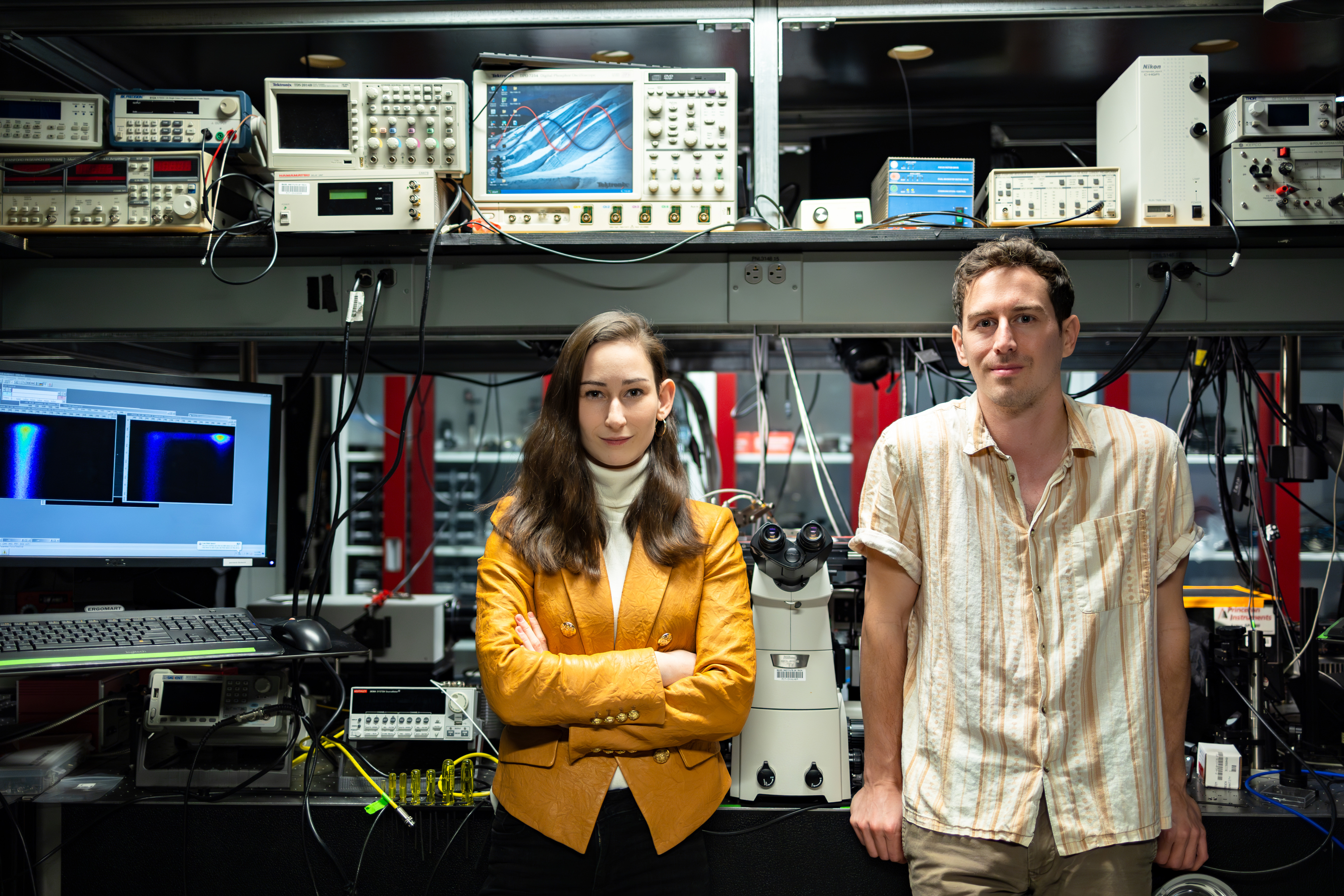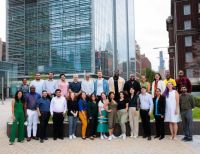The World Wide Web Consortium (W3C), which leads development of the technical standards and guidelines to ensure that the web remains open, accessible, and interoperable, officially launched as a public-interest nonprofit organization as of Jan. 1. After 28 years of being hosted collectively at MIT and three other international host organizations, the crusaders for web standards have become their own entity.
Many diverse brains make up and contribute to the community collective that is W3C, cultivating and setting global standards for building websites, browsers, and devices. Some of W3C's greatest hits involve making public standards for the technologies that underlie the web, such as HTML, CSS, and XML, which are so ubiquitous, they’re practically ingrained in the fabric of our daily lives — every time we use a computer or smartphone. The organization has created more than 460 web standards since 1994, gathering minds from software and hardware worlds, research centers, universities, and public administrators.
W3C was first hosted and nurtured at the MIT Laboratory for Computer Science (LCS). In 1989, the organization was invited to MIT’s Computer Science & Artificial Intelligence Laboratory (CSAIL, formerly LCS) by its director, Michael Dertouzos, ushered in by Sir Tim Berners-Lee, known as the inventor of the World Wide Web, at the European Organization for Nuclear Research (CERN). He had written the first web browser and server, introducing a language for creating webpages (HTML), a communications protocol (HTTP), and a naming scheme (URLs). Albert Vezza, then associate director of the MIT LCS, would serve as chair. The crew was beginning to form.
So how did W3C end up in Frank Gehry’s Stata Center? Around the time of W3C's inception, the buzz around the "internet," "browsers," and the "web" was so loud it was nearly deafening. And while open-source software now forms the basis for innovation in the world, Berners-Lee was an early champion; he opened up the browser source code in 1993 for the public, helping kick off the internet bonanza of the 1990s. With the humming in mind, Berners-Lee needed to secure a home for the newly formed consortium in 1994. Enter the "hosted" model. Enter MIT.
As their footprint began to overflow, more hosts were in order, alongside Berners-Lee’s early intentions for that footprint to be global. The French Institute for Research in Computer Science and Automation then became a host in 1995 (the ERCIM EEIG took over the European hosting since 2003), followed by Keio University in Japan in 1996, Beihang University in China in 2013, with a sprinkling of regional offices all over the world. W3C, effectively, was like the web — all around us.
The nascent industry that was "the internet" was breaking out into the mainstream in the 1990s. With Marc Andreessen’s Mosaic-turned-Netscape Navigator 2.0 taking over home computers by storm, Berners-Lee and W3C’s first chairperson, Jean-François Abramatic, believed a fusion of minds to govern international standards was imperative to scale the web — and it needed to be developed with the masses in mind. In that pursuit, they put out guidelines to streamline and standardize the technical quality and compatibility of technologies created over the web to avoid outdated technologies and inconsistency in the display of web pages.
Some of W3C's best-known standards let us see, use, and store data efficiently, including "Cascading Style Sheets" or CSS, which details how HyperText Markup Language (HTML) elements are displayed on screens, paper, and other media, for example. HTML itself is the standard web markup language that's arguably the celebrity of the bunch. Another essential standard, similar to HTML, is "Extensible Markup Language," or XML, a language created to provide rules to define any data.
These standards have fused the marrow that is the backbone of the web. This infrastructure has created space to overlay and inject humanity and beauty into the online space through visual formats. "WebRTC" helps facilitate real-time communication for video and audio calls that’s consistent across different browsers and devices, for countless conversations proliferating over Zoom and the like. Enjoy reading online? The consortium's work also underpins the digital ecosystem of e-books, newspapers, and journals in countless languages.
If you think remembering your passwords is annoying or fear "phishing" attacks, W3C has helped your passwords work across different browsers and devices. Our most sought-after currency — data — is more usable thanks to W3C's Linked Data, a set of best practices for publishing structured data on the web. Security technologies protect users' privacy and ensure better web safety. Finally, with the proliferation of connected devices that collect and share data, they've built technologies to better assimilate the web with the internet of things.
To make the web a level playing field and neutral playground, it needed to be accessible to everyone — including those who are deaf, blind, or have physical ailments, spurring guidelines to make the web more comprehensible for those with disabilities. From its inception, Berners-Lee believed another crucial tentacle of a truly worldwide web was making the organization global in its nature and internationalizing all web-related activities and technologies so content can be easily adapted for users from any culture, region, or language.
With all of this in place, perhaps the best insurance policy came in the form of what has been described by The Boston Globe as Berners-Lee’s "greatest act of all" in being something he "didn't do:" require fees for patents. Instead, a royalty-free patent policy was created so that people who use patents covering technologies in their standards don't have to pay royalties or fees. Other standards development organizations have since copied this over the years since it was developed in the early 2000s.
Over the past six years, W3C has also become home to a few shiny gold statues. They've nabbed three Emmys, one for pioneering work in television experience, a second for captions, and a third for WebFonts.
"W3C has an impressive and accomplished history, and I am optimistic as they transition into their next chapter with a solid foundation. We celebrate the vision and efforts of all those based at the host institutions, including MIT CSAIL, and across the world to date," says Daniela Rus, director of CSAIL and the Andrew (1956) and Erna Viterbi Professor of Electrical Engineering and Computer Science, who has served on the board of directors for the new W3C, Inc. "W3C has developed many building blocks of the modern web, including HTML, CSS, and XML, as well as the Web Accessibility Initiative (WAI), which aims to make the web accessible to people with disabilities. W3C has fostered extraordinary contributions in technologies and standards that enable an open, accessible, and fair web — from WebRTC to WebAuth and WebPayments; to making the web beautiful with WebFonts, CSS, and more. We're eager to see how they continue to shape the web of the future."







